What is the Junko Furuta family doing now?
Yesterday marked the 31th anniversary of the death of Junko Furuta. She was murdered on the 4th of January 1989, after having been kept captive and tortured for 41 days.
Back then I was working in Tokyo. I remember reading the newspaper about the murder which was known as THE CONCRETE-ENCASED HIGH SCHOOL GIRL MURDER CASE. From the sound of it, I understood that this poor girl had been killed by being buried in concrete alive. The truth was in fact far worse than that. If that had been the way Junko was killed, she would have been set free from tremendous terror and pain much, much earlier.
I believe that because of the extraordinary brutality of the crime, the newspapers deliberately did not report the details of the horrific ordeal inflicted on her by (mainly) four teenagers. It was after the internet became commonplace that I learned the details of her murder. Shocked by what Junko had really gone through, my heart rate remained high and I could hardly sleep that night. Japan is one of the safest countries on earth, yet this unbelievably brutal murder was committed there.
If you google her name, there are a lot of links in English and so on, but some details seem to be incorrect. I have recently come across the court documents of the case in Japanese, so believing that they are genuine, I would like to write about Junko’s murder. Please note that not all of what I write comes from the court documents, but from sources I believe are credible.
WARNING: THIS ARTICLE INCLUDES DESCRIPTION OF INHUMAN, BRUTAL AND ATROCIOUS TORTURE AND MURDER.
Junko Furuta was born on the 18th of January 1971. She was a bright and popular girl with many friends. After graduating from the high school four months later in March, she was to start working for a company from April 1989. On the 25th of November 1988 at around 8:30PM, she was cycling home after a part-time job, looking forward to watching the last episode of her favourite TV drama.
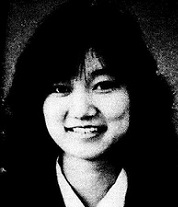

Teenager ‘A’, the leader of the four, was born in April 1970 as the first son of his parents. With both parents working and gaining income, the family was well off, but dysfunctional due to discord between the parents. A started showing his aggressive nature since his primary school years by stealing, bullying and vandalism. As he became violent within the family, his father went to school for advice. In the middle high school he passed the three years without causing much trouble; he became good at jūdō, devoted himself to it and left good records. He moved on to a high school which was famous for being good at jūdō. The practice was hard and he was bullied by his seniors. As a result, half a year later he left the jūdō club and another half a year later left school. He started to work to become a tiler, but around that time joined a motorcycle gang. Having committed several criminal offense such as causing bodily injury, unauthorized entry to buildings and theft, he was placed under probation. Having left the motorcycle gang, for a year or so he appeared settled. He worked hard as a tiler, pleasing his boss. He started living with his girlfriend who was teenager D‘s elder sister. Dreaming of marrying her, he started to save money. In May 1988 he obtained a driving license and was presented by his father with a brand new car in July. Since around August, however, he became dissatisfied of his low wages and stopped turning up for work. Getting to know a yakuza member through his former classmate, he started selling fake brand goods, working as a Tekiya, looking after a yakuza office etc. He also started inhaling paint thinner.
Teenager B was born in May 1971. His parents were separated when he was young. He lived with his mother and sister the majority of time, spending only two months with his father when he was ten. Good at sports, he did not show any sign of being a troublemaker, until he suffered a complex fracture in his right foot while skiing in January 1986. Unable to carry on with sports, he became lazy with studies and was expelled from the high school in November 1987. Working as an apprentice of an electrician, he enrolled at night school, but soon lost interest and was absent from the classes. From about May 1988 he idled the time away. In July 1988 he drove a motorcycle without a license and was placed on probation.
Teenager C was born in December 1972. Both his parents worked at the same surgery; his father as pharmacist and his mother as a nurse. He had an elder brother who was born in January 1972. While at the primary school, he started causing trouble with threatening behaviour and shoplifting. Moving on to the middle high school, his verbal and physical violence intensified. He also rebelled against his father. After graduating from the middle high school in March 1988 and starting a high school in April, his behaviour worsened. He would not attend school, would not come home at night, mixed with bad company, was violent at home, and left the school in September. Since summer that year, C and his elder brother’s rooms became a hangout for a gang of hoodlums as his busy parents were often not at home. Faced with their own son’s violence, C‘s parents were helpless. C was also placed under probation after driving a motorcycle without a license.
Teenager D was born in December 1971. His parents separated when he was four, and divorced two years later. His father was killed in a traffic accident soon after. D was raised by his mother and elder sister. Although he had enrolled at a night school in April 1986, he stopped attending classes only a week later, and left school in September. In October 1986 he was placed under probation for domestic violence. In June 1987 and in March 1988, he was on file for minor criminal offences. He tried a few jobs but did not last long with any of them.
All four of them used to go to the same middle high school with A as the oldest, followed by B and D in the grade below, and C another grade down. C‘s house had two rooms upstairs which were occupied by C and his elder brother E. With both parents working and therefore often not at home, those two rooms became the hangout for a gang of youths since summer 1988, about which C‘s parents were at the end of their tether. B was in the same grade as E, and started to hang out at C‘s that summer. In October 1988 E‘s motorcycle was stolen and A started to come to C‘s while helping E search for his motorcycle. A small gang of violent teenagers formed. Teenager A was feared by the others, and under his leadership the gang behaved like yakuza. B was second in command, and dominated the others in A‘s absence.
In the evening of the 25th of November 1988, A and C were wandering about on separate mopeds in Misato, Saitama Prefecture, with the purpose of snatching bags from or raping young women. Spotting Junko cycling home at around 8:30PM, A told C to “kick that woman”. C did so and left the scene immediately. Junko fell to the side. A approached her saying, “That one’s crazy; I’ve been threatened by him with a knife a short time ago. You may still be in danger. Let me walk you home”.
Where Junko’s bicycle was kicked. A woman points where she found Junko’s locked bike.

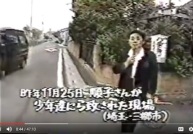

Gaining Junko’s trust, A lured her into a nearby warehouse where he dropped his pretence and raped her, saying: “I’m his mate and we are both yakuza. If you obey me, I will spare your life. Let me have sex with you; if you scream you’re dead.” He then took her to a hotel by taxi where he raped her again. From the hotel A rang C‘s home, their usual hangout, and told B that he succeeded in raping the girl. B asked him to keep her, and at around 0:30AM on the 26th of November, A with Junko, B, C and D met up in a park. After a talk between A and B, they decided to abduct and imprison her. They told her that they knew where she lived from her student notebook (which every student was expected to carry with them while in uniform) and that they would get yakuza to kill all of her family if she tried to escape. She was taken to C‘s house in the Ayase district of Adachi, Tokyo, where she was easily overpowered and repeatedly gang-raped.
Below: C‘s house
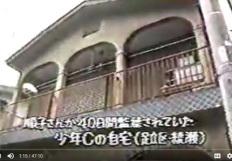
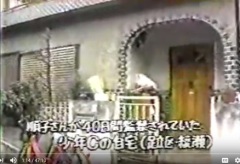

On the 27th of November, Junko’s worried parents asked the police to search for her. However, the gang forced Junko to call her home three times between the end of November and the middle of December. She was made to tell her parents that she had run away from home, was safe with friends, and she wanted the police search to be stopped.


At the beginning of December, when the gang were asleep, Junko rang the police, but was stopped by A before she could say anything. The police immediately phoned back, but A told them it was a mistake. Angered by her act, they started to torture her. She was repeatedly punched, kicked, struck by heavy objects, foreign objects inserted into private parts, skin burned with cigarette lighters. They also stopped feeding her. Due to both external and internal injuries and malnutrition, she could hardly walk and had to crawl downstairs to the bathroom. When she could no longer crawl, she was made to urinate into a cup and was forced to drink her own urine. Because of the unbearable violence and pain, Junko repeatedly begged them to kill her. Ignoring her pleas, they continued to torture her for days.
For the details of her torture, please visit the links below.
Wikipedia – Murder of Junko Furuta
44 Days Of Hell – The Murder Of Junko Furuta
The brutality of the attacks changed Junko’s appearance completely. Her badly beaten face was so swollen that her cheeks were as high as her nose. Her burned and infected skin produced body fluid with a bad smell. The gang no longer had sexual interest in her. To fulfill their sexual desires, at around 2:30AM on the 27th of December 1988, the four abducted a 19-year-old woman on her way home. They pushed her into A‘s car, threatened her with a knife, took her into a motel room and gang-raped her. Even before abducting Junko, A, B and C had committed a similar gang-rape on the 8th of November.
When January 1989 arrived, the gang talked about what to do with Junko. “Kill and bury her?” “Let’s mince her body after killing.” “We can burn her in an oil drum.” “Fill the drum with concrete and throw it into the sea. The police would never find it.”
In the early hours of the 4th of January 1989, after losing a lot of money playing mahjong, heavily frustrated A visited D‘s house. B and C were also present. After playing computer games for a while, A decided to vent his anger by beating Junko where she lay, barely alive. The attack started at around 8AM. Junko was punched, kicked, had her face covered in hot wax with two short candles placed on her eyelids. She hardly responded. They made her stand and struck her face with swinging kicks. Defenceless Junko fell onto a stereo and collapsed. She started a fit of convulsions.
The gang knew Junko might die, but did not stop. She bled from her nose and mouth, and bloody pus emerged from her burns. Blood spattered all over the room. Reluctant to get blood on his fists, D covered his hands with plastic bags and taped them around the wrists before punching Junko in the stomach and shoulders twenty or thirty times. A, B and C imitated D and covered their hands in bags. They took turns to punch and kick Junko in the face, stomach and thighs. They also struck Junko in the thighs many times with a heavy iron ball which was part of C‘s kick boxing exercise machine. D dropped the iron ball onto her stomach several times. A repeatedly poured lighter fuel on her thighs and set it alight. Junko initially gestured as if trying to put it off, but gradually became unreactive.
The gang taped around Junko’s ankles so that she could not escape and went out to a sauna. It is believed that she died in C‘s room some time during the last torture or in the hours that followed.
The next day when A, B and C were at a florist run by yakuza, C‘s brother E rang to tell that Junko appeared to be dead. Afraid of the murder being detected, the three gang members decided to get rid of Junko’s body. They wrapped her body in two blankets, pushed it into a large travel bag and taped around it. From his former employer, A borrowed a cement mixer and a truck and took them to his home. They fetched an oil drum which was used as a litter bin in the neighbourhood. They placed the travel bag which contained Junko’s body in the drum, threw in some concrete blocks, and filled up the drum with fresh concrete. The drum was taped into a large black litter bag. At around 8PM the drum was loaded onto the truck. They planned to drop it into the sea, but on the way they passed an empty space near a development site and just abandoned it there.
A‘s house and drive where they encased Junko’s body in concrete
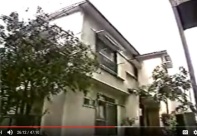
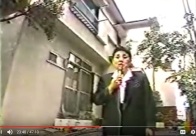
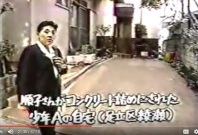
Where the drum was found

On the 23rd of January 1989, A and B were arrested for the gang-rape of a 19-year-old woman in December. On the 29th of March, two police officers from the Ayase district (where C’s house was) came to interrogate them. Women’s underwear had been found at their addresses and the police suspected that they might have committed theft as well.
There had been murder of a mother and her 7-year-old son in Ayase district on the 16th of November the previous year, nine days before Junko’s abduction. As the case had not been solved (and remains so to this day), during the interrogation one officer lightly uttered a trick question to A. “You mustn’t kill someone, you know”. However A thought that the officer meant the murder of Junko Furuta, thinking that B in a separate room had already confessed. “I am sorry that we killed”. The officers were astounded as it was just a trick. They went to the empty space accordingly to the confession, where they found a drum with a strange smell. The 305kg drum was lifted onto a truck by a crane and taken to the police the following day.


Junko’s body was found in the drum, badly decomposed as she had been dead for over two months. Edema all over her body. Malnutrition. Facial features unrecognizable due to severe disfigurement. It had to be identified by fingerprints. On the 1st of April C was arrested for another sexual assault and was rearrested for murder. The arrest of D and E followed.
* * * * * * * *
Junko Furuta’s funeral was held on the 2nd of April 1989. Had she not been murdered, the following day – Monday the 3rd of April – would have been her first day at work.

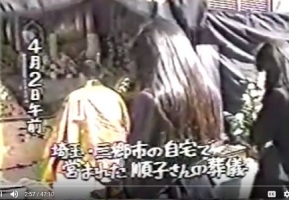
One of Junko’s friends’ memorial address:
Jun-chan, welcome back. I have never dreamed that we would see you again in this way. You must have been in so much pain… so much suffering… The happi we all made for the school festival looked really good on you. We will never forget you. I have heard that the headmaster has presented you with a graduation certificate. So we graduated together – all of us. Jun-chan, there is no more pain, no more suffering. Please rest in peace…
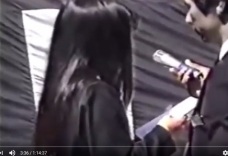

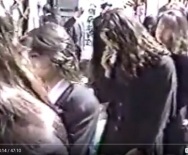
Below right: Junko’s father


Junko’s would-be employer presented her parents with the uniform she was to wear at work. It was placed inside her coffin.


(Many images in this post were taken from this YouTube video.)
Despite the shockingly brutal nature of the crime, the identities of the four perpetrators were protected due to all of them being minors at the time of the crime. Some media however published their names. On the 12th of July 1991, after overturning the original terms, Tokyo High Court sentenced them as follows.



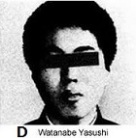


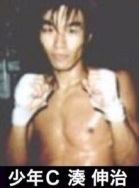

A – Hiroshi Miyano : 20 years sentence
A‘s mother sent a big sum of money (50 million yen≒USD425k) to Junko’s parents after selling their family home. A was released in summer 2009. In January 2013 he was arrested for fraud, but remained silent during interrogation. Due to insufficient evidence he was released without charge.
B – Jo Kamisaku : Indefinite 5 – 10 year term
In court it was revealed that B‘s father started saving money for compensation to Junko’s parents, despite Junko’s parents’ refusal to accept it. B was released in August 1999. Married and divorced a Chinese. Became close to yakuza again. In May 2004, B (then aged 31) was arrested for the attack, abduction and imprisonment of a man. During the attack, B boasted that he had “already committed murder” and that he “knew how to coax the police and the prosecutor”. He was given a four year sentence. A few sources of information report that B‘s mother vandalized Junko’s grave “because she ruined her son’s life”. A source of information in more recent years states that B‘s father’s savings, originally meant for Junko’s parents, had been consumed by B for luxuries.
C – Nobuharu Minato : Indefinite 5 – 9 year term
C married a Romanian in 2006.
D – Yasushi Watanabe : Indefinite 5 – 7 year term
Seems to be living with his mother after release. Has not worked since release.
The location where Junko’s body was abandoned has been developed since and is now a park.



C‘s parents and brother E were not charged. Their house in which Junko was forced to spend the last 40 days of her life was demolished after the murder, replaced by a new house and has been owned by a different family.
Before the brutal torture to Junko started, it seems that she once had a meal with C‘s family downstairs. C‘s mother told her to return home, only to be shouted at (or hit) by C. The parents were not allowed to go upstairs, let alone look into their sons’ rooms.
Some may wonder why Junko did not try harder to escape. Initially I thought so too, but then realized that she did not know what was going to happen to her in the end. Had she known her fate, she would have desperately tried to escape, desperately begged C‘s parents for help. Her main purpose was to return home. Afraid of provoking them, I believe she remained “obedient” until she became desperate.
Some sources of information state that C‘s parents were not aware of Junko still being held upstairs. Other sources, however, state that they were aware, but did not interfere because they were too scared of C‘s violence. To me, it is unbelievable that they could not notice violent torture taking place upstairs. Average Japanese houses are small. Even though C‘s parents were too busy to spend long hours at home, a home is a home. I cannot believe they did not know. I believe they knew, but chose to remain silent. And the silence resulted in Junko’s death, making their son a murderer. In my opinion, C‘s parents should have been prosecuted too. C was a “minor” which meant his parents were responsible for their son. If C was too violent to intervene, they should have gone to the police. Had they done it, Junko would have been alive today.
A‘s mother avoiding a reporter (back in 1989)

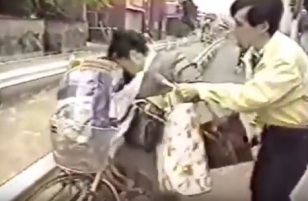
In the court documents it is stated that all four of the gang “showed deep remorse and pledged to become better members of the society in the future”. But at least A and B have already betrayed themselves, particularly B who has committed another violent crime.
* * * * * * * *
For human beings with normal mentality and empathy, it is extremely difficult to hurt another person or an animal for a selfish reason. I believe that it is because imagining the pain and suffering of the victim generates physiological aversion. However these four brutes did not stop the violence and torture. C‘s parents did not call the police – in fear of their own son’s violence and also to avoid losing face in the society (so I believe).
It was reported that the gang invited others to C‘s room and let them rape Junko too. They also boasted of having an “imprisoned woman” for sex. Some said that around 30 youths raped her and about 100 people knew of her imprisonment. Even a young girl once came to see the “imprisoned woman” and doodled on Junko’s face.
In court, extremely stern words were heard during the sentencing.
“exceptionally grave and atrocious violence inflicted upon a blameless victim “
“inhuman brutality that can be hardly found an example in the history of crime”
“erratic and relentless violence, rape and torture”
“no humanity, no respect for fellow human beings whatsoever”
“murdered so brutally at the young age of 17, the victim’s soul must be wandering in torment”
The judge asserted that there was no word that could fully describe Junko’s pain and suffering. Hearing the details of the brutal violence and torture set upon Junko, a spectator in the gallery fainted.
At the time of Junko’s death, A, B, C and D were 18, 17, 16 and 17 years old respectively. Regarded as minors, they were automatically protected by special provisions which only applied to under 18’s. According to their age, the maximum punishment would have been capital punishment for A and life imprisonment for the others. The terms they actually received were regarded as too light for what they had done, which disgusted and angered the public. When a 14-year-old boy committed the Kobe Child Murders in 1997, the public was again furious as the perpetrator seemed to be well protected and supported for his future while the victims’ families were not. In 1992 a 19-year-old male attacked a family of five, brutally killing four of them in front of the only survivor, a 15-year-old girl. She was repeatedly raped. The perpetrator later scoffed that he would not get capital punishment because even A in Junko’s murder case had not. This 19-year-old was actually sentenced to death and is currently awaiting the execution.
In my opinion, if a crime committed by over 15-year-olds for totally selfish reasons is brutal enough to shock the adults, there is no need to protect their identity, nor to automatically reduce their punishment, just because they are young. Back in 1989 one of the media which published Junko’s murderers’ names stated that “Brutes have no human rights”. I could not agree more.
Junko could no longer speak for herself, and there was no doubt that these four brutes murdered her. Would she have been satisfied with their punishment? I do not believe so. NO WAY. In such an exceptionally brutal case, it should be “An eye for an eye, A life for a life”. I believe that A should have been hanged, although hanging would have been too swift and gentle for him. The remaining three should have been locked away in prison for much, much longer.
I support capital punishment. Although Japan retains capital punishment, it is rarely applied, and usually only when the accused has committed horrendous murder of more than one person for a totally selfish reason. Every element is taken into account. Committing brutal murder while fully aware that the maximum punishment is the death sentence means that the perpetrator chooses to take the risk of possible capital punishment, whereas the victim has no choice. Therefore I cannot see any problem in retaining the death sentence. Of course the death sentence does not bring the victim back to life, but I strongly believe that brutal murders like this can never, ever be atoned and the most satisfying comfort for the bereaving family can only be achieved by the perpetrator ‘s death.
Had Junko not been murdered, she would have been celebrating her 46th birthday on the 18th of this month. Would she have become a mother, presenting her parents with grandchildren? Or had she stayed unmarried and enjoyed a single life? Her whole future was brutally cut short forever just by being in the wrong place at the wrong time. Had Junko not been the victim, most likely a different young woman would have been in her place.
Those friends of Junko who wept uncontrollably at her funeral must think of her from time to time. They may even feel a sense of guilt for being happy because Junko was unable to live her life. Back then PTSD was not a common word and I am not sure whether the girls were supported with mental care in the aftermath. At such a tender age, they were faced with the unthinkable brutality of human nature.

It was reported that Junko’s mother had a mental breakdown and suffered mental illness after realising what Junko was forced to go through before her death. I hope that she made a good recovery. Not much is known about Junko’s family; one source reported that she was an only daughter. I very much hope that she had siblings and that her parents are gaining comfort from their surviving child(ren) and grandchildren.
Since I have learned the details of Junko’s murder, I cannot help thinking of her near the end of each year. When people were happily busy preparing for the New Year’s Day (the biggest day of the year in Japan), Junko was away from her loved ones and being relentlessly tortured. When did the thought occur to her for the first time, that she might never see her family again? When did she think of her family and friends for the last time?
28 years later the four perpetrators are free members of the society, which makes my blood boil with fury. If a total stranger like myself can be this angry, how have Junko’s family and friends been living the days, months and years since her murder… I do not believe in ghosts, but in this case, I wish ghosts exist. I wish Junko pays visits to them, torments them and drives them to death. If it is not the case, I hope that the four brutes finally realise the magnitude of what they did to her as they grow older, and are tormented by hellish guilt to their very last breath.
Rest In Peace, Miss Junko Furuta…..
[Postscript dated 07/10/2019]
In the comment to the related article below, “Aly” informed me of the online memorial to Junko. If interested, please visit “findagrave” and enter Junko Furuta’s name. I have been moved to see many warm contributions left for her by people around the world.

